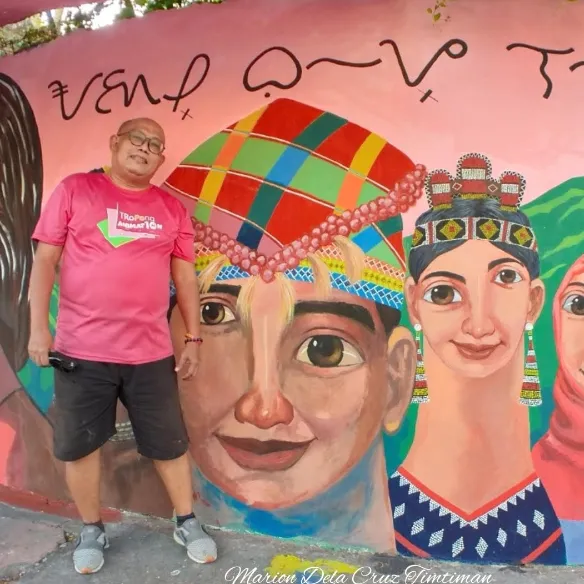
Ted Camahalan
21 Artworks
Biography
The genesis of this idea originates from the titan of the 20th century himself, Pablo Picasso, who once said, I do not seek, I find.
Ted Camahalan, or as sobriquets emerge in time as a talisman of identity: "TedCa," was born to a daughter of Mindanao and, as such, did not find his subject matter so much as he was born to it. The umbilical cord that connects TedCa to the culture and tradition from which his mother emerged and was steeped in, has never been severed.
In terms of depictive style, he veered away from the serious photo-documentary approach, something suited for archivists, scholars, and ethnologists, and instead, opted for a more aesthetically interlocking of subjects and the broader Christian view of ethic tribes as "The Other." In social, ethical, cultural, or literary circles, "The Other" refers to "the social order and/or psychological ways in which one group excludes or marginalizes another group."
He may yet be in a better position among other artists to express such tense-filled sentiments, for he straddles both sensibilities: while born a Christian, he has been immersed in Mindanaoan culture. He therefore understands the Christian fascination and curiosity for a culture that has different things and ways of doing and living.
As to the execution of his images, he has adopted a look that may yet become a trademark: skewed or lopsided eyes. To be sure, they recall the Cubistic portraits of Picasso’s lovers: Therese, Olga, and Dora Maar. Nonetheless, the adaptation of a Picassoian Cubistic quirk—almost a recurring motif—has been put to his individual use. Moreover, the eyes are symbolic of the artist himself. Thus, the title refers not only to the tribesmen and women but also to him, through whose judicious eyes is filtered the Christian lowlander’s lopsided view of "The Other."
A self-taught painter, TedCa never took up formal schooling in painting. His many friendships, however, such as those with notable artists Fernando Sena and the late Malang, have been largely instrumental in his decision to devote more time to art. Prior to his commitment to painting, he had worked for decades in the field of animation. But under Sena, he benefited from the famed art workshop master's practical pointers and tips on techniques. More significantly, it was Malang’s words of wisdom that had enlightened him about his future. Technology, he had said, would eventually replace the human animator—and where would he then be? Of course, the field of animation is now technology-driven, and the animator has become its mere manservant, operating the machine and pressing the right buttons. Having decided to paint, he knew there was no turning back.
Finally, he had opened his native eye and found art.
